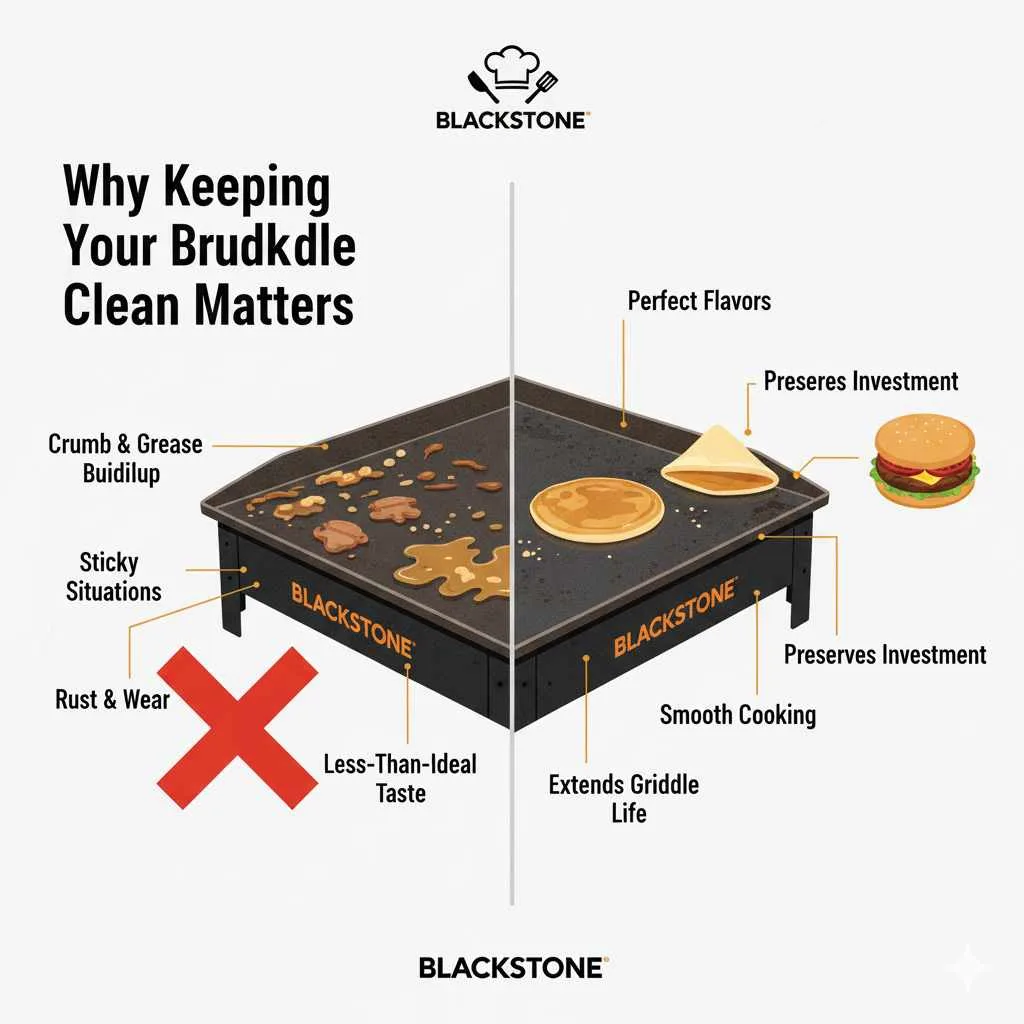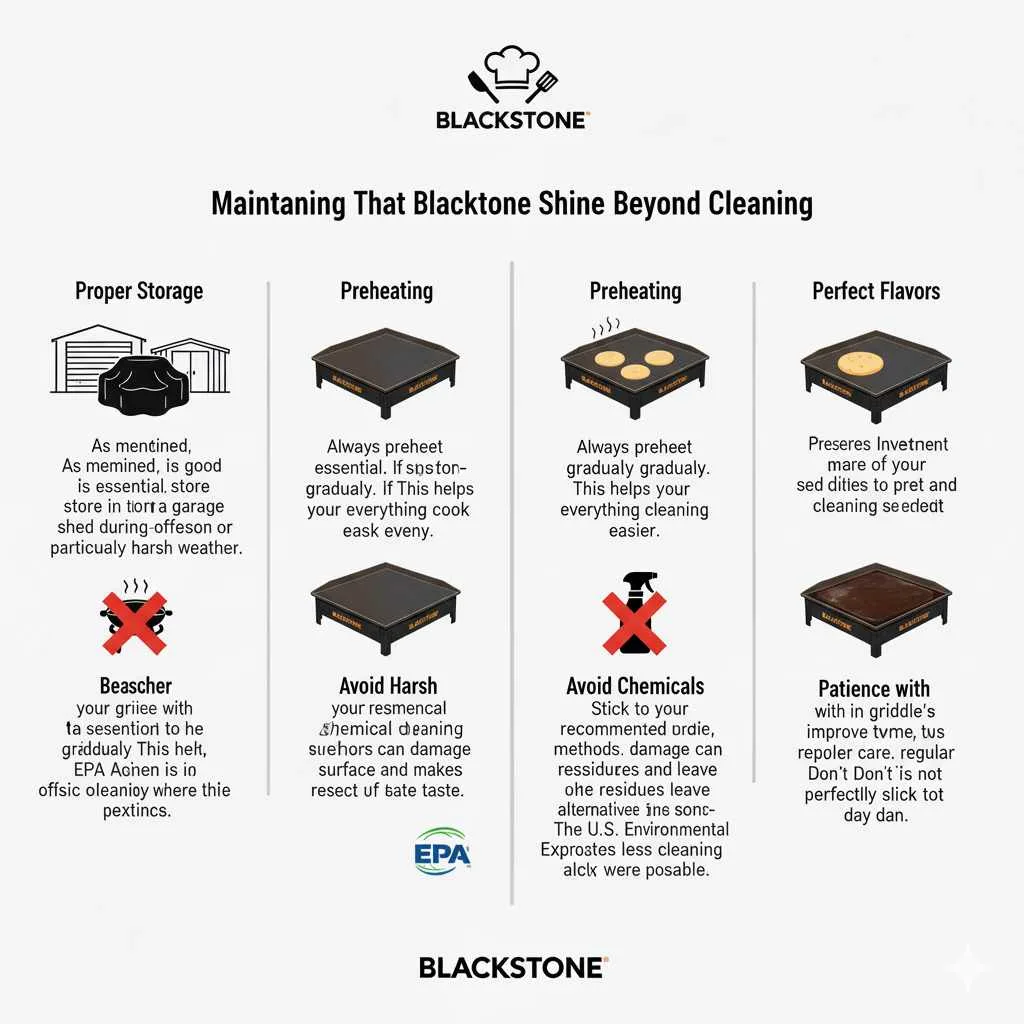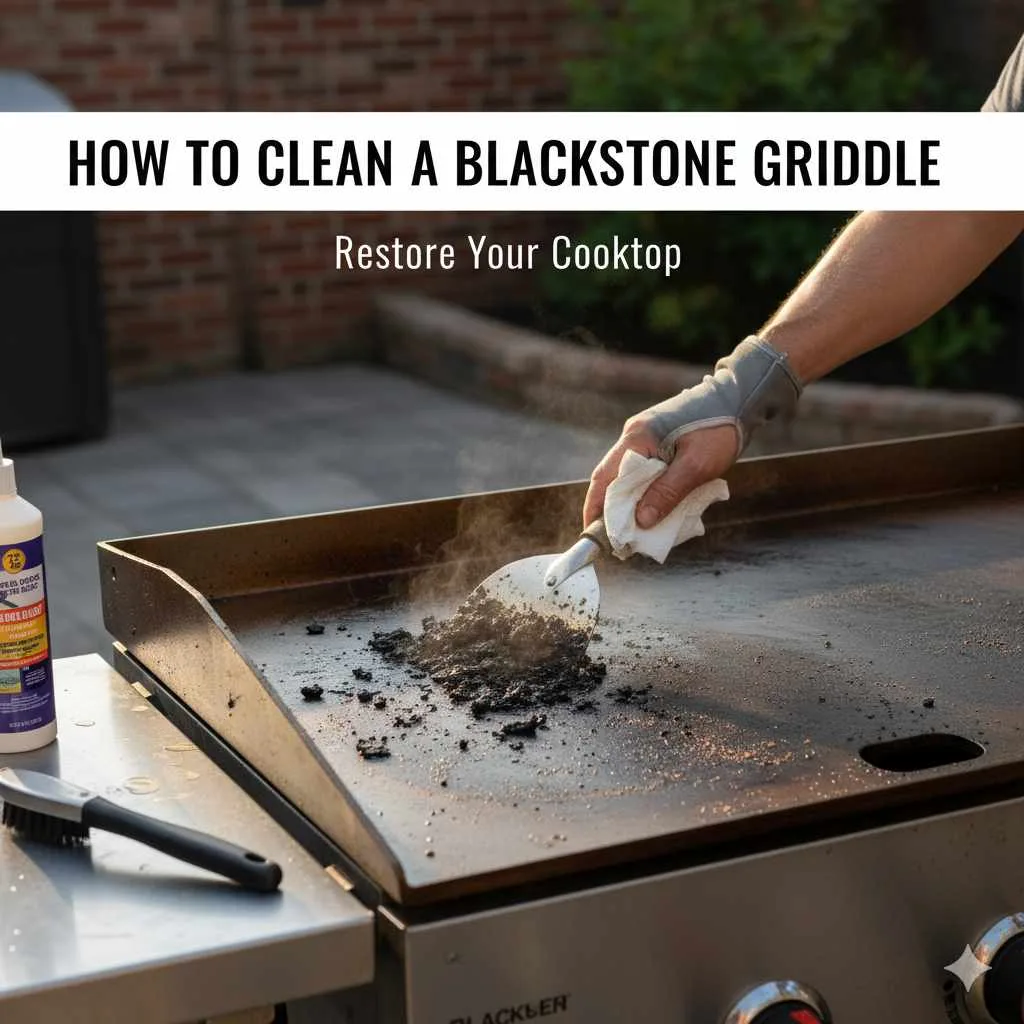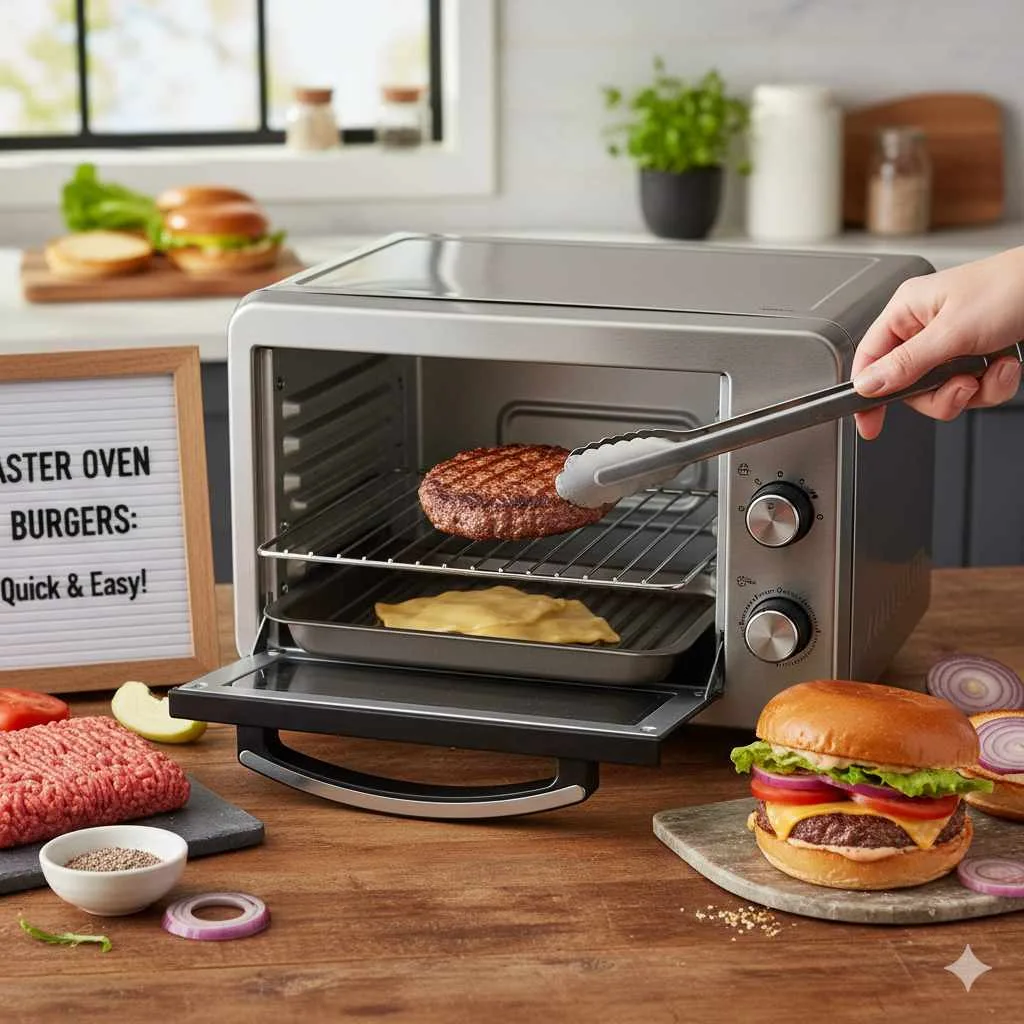Quick Summary:
Cleaning your Blackstone griddle is simple and essential for longevity and delicious cooking. A quick wipe-down after each use, followed by periodic seasoning, using basic tools and techniques, will keep your griddle in top shape for countless meals.
Welcome to the wonderful world of Blackstone griddle cooking! If you’ve just unwrapped your shiny new Blackstone or are a seasoned griddle master, keeping it clean is key. A well-maintained griddle not only looks great but also ensures your food tastes amazing, every single time. Don’t worry if you’re new to this; cleaning a Blackstone is surprisingly easy and becomes second nature after a few uses. Let’s dive in and discover how to make your griddle sparkle!
Why Keeping Your Blackstone Griddle Clean Matters
Think of your Blackstone griddle as a culinary canvas. Just like an artist keeps their palette clean for vibrant colors, you need to keep your griddle clean for perfect flavors. Crumbs, grease buildup, and rust can all interfere with your cooking, leading to sticky situations and less-than-ideal taste. Regular cleaning also prevents rust and wear, extending the life of your griddle significantly. It’s about preserving your investment and ensuring every pancake flip and burger sear is a success.

Essential Tools for Cleaning Your Blackstone Griddle
Gathering the right tools makes any cleaning job smoother. Luckily, you probably already have most of what you need around the house. These items are simple, effective, and perfect for beginners:
- Griddle Scraper: A dedicated griddle scraper (look for the flat, wide ones designed for griddles) is your best friend. A putty knife can also work in a pinch, but be gentle.
- Paper Towels or Lint-Free Cloths: You’ll need these for wiping down the surface and applying oil.
- Spatulas: Wide, flat spatulas are great for scraping up stuck-on bits.
- Dish Soap (Mild): A small amount of mild dish soap is occasionally useful, especially for initial cleans or stubborn messes.
- Water: For rinsing and steam cleaning.
- Cooking Oil: Essential for seasoning, which is part of the cleaning and maintenance process. Look for high smoke point oils like vegetable, canola, or flaxseed oil.
- Heat-Resistant Gloves: For safety when the griddle is hot.
- Stiff Brush or Sponge: For scrubbing away tougher residue.
- Bucket: For water or discarded grease.
The Simple Steps to Cleaning Your Blackstone Griddle
Cleaning your Blackstone doesn’t have to be a chore! Let’s break it down into easy steps. We’ll cover the after-cooking clean-up and a more thorough deep clean.
Step 1: The Quick Clean-Up (After Every Cook)
This is the most important routine to get into. Doing this after every single use will save you a lot of time and effort later on. It’s all about preventing buildup before it becomes a problem.
- Scrape While Warm: As soon as you’re done cooking and the griddle is still warm (but not blazing hot – use your heat-resistant gloves!), grab your griddle scraper. Firmly scrape all food debris, grease, and crumbs towards the grease trap. This should be a quick, smooth motion.
- Wipe Down: Use a few paper towels or a lint-free cloth. You can lightly dampen one if needed to pick up residue, but avoid soaking the griddle. Wipe the entire surface to remove any remaining particles.
- Lightly Oil: Pour about a tablespoon of cooking oil onto the surface. Spread it evenly with a paper towel. This creates a protective layer that prevents rust and helps with your next cooking session.
- Cool and Cover: Let the griddle cool completely, then place the cover back on to protect it from dust and the elements.
Step 2: The Deeper Clean (Periodic Maintenance)
Even with regular quick cleans, you might occasionally need to do a more thorough cleaning. This is especially true if you’ve cooked a particularly messy meal or notice some minor sticking. This process is often referred to as “re-seasoning” or a “deep clean.”
- Scrape Thoroughly: Heat the griddle to a medium-high temperature. Once hot, use your scraper to aggressively remove any burnt-on food, grease, or sticky residue. You want to get down to a clean metal surface.
- Deglaze with Water (Carefully!): Once most debris is scraped off, carefully pour about half a cup of water onto the hot griddle. It will steam up vigorously – this is good! Use your scraper and spatula to scrub the remaining bits loose as the water boils and lifts them. Be cautious of the steam.
- Scrape Out Residue: Scrape all the water and loosened gunk into your grease trap or a designated waste bucket. Don’t let it sit on the surface.
- Wipe Clean: Use paper towels or cloths to wipe the surface as dry as possible. You might need to do this a few times to remove all moisture and residue.
- Re-Season: This is crucial. Lower the heat to medium-low. Apply a thin, even layer of cooking oil all over the griddle surface. Use a paper towel to spread it. You want it to look glossy, not pooled.
- Heat to Smoke Point: Let the oil heat up until it just begins to smoke. You might see some smoke, which is normal. Let it smoke for a few minutes to allow the oil to polymerize and create a non-stick layer.
- Repeat Seasoning: For a really durable surface, repeat the oiling and heating process 2-3 more times. This builds up a strong seasoning layer.
- Cool and Cover: Once you’re done, let the griddle cool completely before covering it.
Dealing with Common Blackstone Griddle Issues
Even with the best intentions, you might run into a few common griddle “moods.” Here’s how to handle them:
Rust Spots
Rust happens, especially if your griddle has been left uncovered in damp conditions. Don’t panic!
- Heat the griddle to medium-high.
- Use steel wool or a stiff metal brush to vigorously scrub away all the rust.
- Wipe the surface clean with paper towels until no rust residue remains.
- Immediately proceed with a deep clean and re-seasoning process (Steps 1-7 from the Deeper Clean section) to protect the exposed metal.
Stubborn Stuck-On Food
Sometimes, a bit of burnt food just refuses to budge.
- Try the water deglazing method described above.
- You can also try using a specialized griddle degreaser, following the product instructions carefully. Always rinse thoroughly and re-season afterward.
- For extremely tough spots, a razor blade can be used at a very low angle along the surface, but be incredibly careful not to scratch or gouge the griddle. Use this as a last resort.
Uneven Cooking Surface
If you notice hot or cold spots, it’s often due to uneven seasoning or debris.
- Perform a deep clean and re-seasoning, paying extra attention to spreading the oil evenly.
- Make sure the griddle is level. An uneven surface can cause oil to pool in some areas and leave others dry, leading to uneven heating. Check your Blackstone’s legs and adjust if necessary.
Seasoning: The Secret to a Non-Stick Surface
Seasoning is more than just cleaning; it’s about creating a natural non-stick coating. It’s a polymer layer that forms when cooking oil is heated to its smoke point and bonds with the metal. This is what makes Blackstone griddles so beloved for their excellent searing and easy food release.
The process involves applying a thin, even layer of oil and heating the griddle until the oil smokes. This polymerizes, hardening into a slick surface. Repeating this process builds a robust seasoning layer that improves with every use and proper cleaning.
What is Polymerization?
Polymerization is a chemical process where small molecules (monomers) join together to form a larger, more complex molecule (polymer). In the context of seasoning a griddle, cooking oil, when heated sufficiently, breaks down and reforms into a hard, plastic-like coating that adheres to the metal surface. This coating is what gives your griddle its non-stick properties and protects it from rust.
According to Texas A&M University’s Agrilife Today, “Oil polymerization is the process that creates a protective, non-stick coating on these cooking surfaces. This coating is formed when cooking oils are broken down and reformed into a hard, plastic-like layer.” This scientific principle is what makes seasoning your Blackstone so effective.
Blackstone Griddle Cleaning & Maintenance Comparison
Here’s a quick look at the differences between the routine clean and a deeper clean:
| Aspect | Quick Clean-Up (After Every Cook) | Deep Clean/Re-Seasoning (Periodic) |
|---|---|---|
| Frequency | After each cooking session | Weekly, bi-weekly, or as needed |
| Purpose | Remove immediate debris, prevent sticking | Restore surface, remove tough residue, build/repair seasoning |
| Key Steps | Scrape, wipe, light oil | Scrape aggressively, water deglaze, thorough wipe, multiple oiling/heating cycles |
| Tools Used | Scraper, paper towels, oil | Scraper, steel wool/brush (optional), water, paper towels, oil, gloves |
| Result | Ready for next cook, rust prevention | Restored non-stick surface, rust removal, enhanced durability |
Safety First!
Your Blackstone griddle gets very hot, so safety should always be your top priority. Always wear heat-resistant gloves when handling the griddle surface, especially when it’s warm or hot. Never use water on a searing hot griddle aggressively unless you are intentionally deglazing, as sudden temperature changes can cause damage or create dangerous steam flare-ups. Ensure good ventilation when cooking and cleaning, and be mindful of where children and pets are.
Maintaining That Blackstone Shine: Beyond Cleaning
Keeping your Blackstone griddle in prime condition involves a few more thoughtful habits:
- Proper Storage: As mentioned, a good cover is essential. If possible, store your griddle in a garage or shed during the off-season or in particularly harsh weather.
- Preheating: Always preheat your griddle gradually. This helps everything cook evenly and makes cleaning easier.
- Avoid Harsh Chemicals: Stick to the recommended cleaning methods. Harsh chemical cleaners can damage the cooking surface and leave residues that affect food taste. The U.S. Environmental Protection Agency (EPA) also promotes the use of less toxic cleaning alternatives where possible.
- Patience with Seasoning: Your griddle’s seasoning will improve over time with regular use and proper care. Don’t get discouraged if it’s not perfectly slick from day one.

Frequently Asked Questions About Cleaning a Blackstone Griddle
Q1: How often should I clean my Blackstone griddle?
It’s best to do a quick clean-up after every single use while the griddle is still warm. A more thorough deep clean and re-seasoning should be done periodically, perhaps every few weeks or when you notice food sticking more than usual.
Q2: Can I use soap to clean my Blackstone griddle?
A small amount of mild dish soap can be used sparingly during a deep clean if you have a particularly greasy mess, but it’s generally not recommended for regular cleaning. Soap can strip away the seasoning layer. If you do use soap, be sure to rinse thoroughly and re-season immediately.
Q3: What kind of oil should I use for seasoning?
Oils with a high smoke point are ideal. Common choices include vegetable oil, canola oil, grapeseed oil, or flaxseed oil. Some people also use lard or bacon grease for added flavor, but plain cooking oils are excellent and reliable.
Q4: My griddle has rust. How do I fix it?
Rust can be removed by heating the griddle and scrubbing with steel wool or a stiff brush. After removing all traces of rust, immediately perform a deep clean and re-seasoning process to prevent it from returning.
Q5: Do I need to season my Blackstone griddle every time?
You need to apply a very light coat of oil after every cleaning to protect it from rust. The full seasoning process (applying oil and heating until smoking) is done during deep cleans to build or restore the non-stick layer.
Q6: Can I use a wire brush on my Blackstone?
A stiff metal brush or steel wool can be used for deep cleaning and rust removal, but it should not be used for routine wiping. Overuse of abrasive tools can damage the seasoning. For daily cleaning, a griddle scraper is best.
Q7: Is it okay to leave my Blackstone outside uncovered?
No, it’s highly recommended to use a cover designed for your Blackstone griddle. Leaving it exposed to the elements, especially moisture, is a sure way to encourage rust and premature wear. Always store it covered in a dry location.
Conclusion: Your Blackstone is Ready for Action!
See? Cleaning your Blackstone griddle is a straightforward process that makes all the difference in your cooking experience. By following these simple steps for quick clean-ups after each meal and periodic deeper cleans, you’ll ensure your griddle stays in fantastic condition for years to come. You’ll enjoy perfectly cooked food, beautiful sear marks, and the satisfaction of maintaining your outdoor cooking essential. Happy griddling, and enjoy all the delicious meals you’re about to create!








Leave a Reply